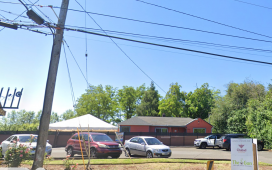Investing in resident security has never been more critical — and in some cases at least, as expensive — for skilled nursing facilities. And it’s not for the timid, given the current pace of innovation. But with the right advice, thorough research and a solid plan, the prospects of making smart decisions and prudent investments are vastly better.
1. Facilities can and should take steps to better manage their resident security expenditures.
Step one: Develop a plan.
“Skilled nursing facilities face the challenge of balancing high-quality resident care with tight budget constraints, especially when it comes to security expenditures,” says Satish Movva, CEO and founder of CarePredict, which provides monitoring systems.
An appropriate first step is a security risk assessment, which includes a hazards vulnerability analysis that can help spot specific threats inside a single building or across a campus.
“A security risk assessment will determine gaps they may have in their current practice and infrastructure,” says Sakhonh Kheuamun, director of security and emergency management at Boston-based Hebrew SeniorLife.
Also include a detailed, written plan for specific emergencies, Kheuamun adds.
“Perform a hazard vulnerability analysis to help determine specific threats,” he says. A new tech assessment should also include longevity of the product’s support. “Vendors may change policies, especially if they need to cut costs, so it’s important to check to see if their support policies, offerings or training programs have changed.”
At SafelyYou, a fall prevention firm, COO Shirley Nickels stresses technology that lowers costs for residents, families and facilities.
“Choose a solution that successfully improves resident safety and mitigates risk, effectively paying for itself,” she advises. “Invest in proven tools and technology that solve a specific issue.”
She says she also looks for solutions that show success in broad studies, with consistent results.
2. Next, establish priorities around needed technology. Not doing so could invite unintended consequences.
“The main priorities for planning a security budget are labor, equipment, training and, of course, safety,” says Kheuamun.
And don’t overlook the need for a security staff based on size and population.
“Enlist the assistance of an independent third-party community security consultant,” advises Charles Mann, founder of the entry management company Accushield.
“Ensure the individual is not affiliated with a security company and will conduct a comprehensive perimeter and interior assessment of resident security and associated risks,” he adds.
It also helps to know your facility’s major security gaps.
“Determine what risk is really costing you, and budget for protecting residents from incidents that are most costly — physically, emotionally, and financially,” says Nickels. “Falls, particularly those that aren’t monitored and documented, are a prime example.”
3. With security systems in place, establish an interval for measuring their effectiveness.
“Measuring your tech’s impact is the only way to understand the true value of your investment,” adds Nickels.
“The real value of a security technology investment is what it prevents, like costly incidents like falls and elopement,” adds Movva. “Keeping the number of redundant systems, workflows and user interfaces to a minimum will not only save money but be easier to manage in the long run.”.
Regular drills and checks of technology, including infrastructure, will help providers identify device or system effectiveness, performance gaps and potential needed upgrades or downgrades, according to Kheuamun.
“This could be as simple as checking fire extinguisher levels and AED kits,” he notes.
4. Enlist the expertise and advice of vendors at every opportunity.
There is a lot of built-up industry knowledge there. Nickels says SafelyYou provides every customer with a dedicated clinical success manager who meets with the on-site team regularly in fall huddles, analyzing fall events and developing fall prevention interventions.
Before even needing a vendor’s assistance, however, ensure you’re working with companies that are constantly innovating, Movva adds.
Mistakes to avoid
» Jumping to a new, shiny offering from an untested vendor with a thin resume. Experience counts.
» Failing to grasp tech’s true cost. Many mistakes come from under-budgeting expenses.
» Ignoring redundancies. Avoid technology with expensive add-ons covered by existing tech.
From the July/August 2024 Issue of McKnight’s Long-Term Care News











